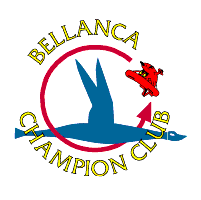Jonathan and others, the following is just good to know. :wink:
The Imron you've had, if it is the trade mark from Dupont because there is no other Imron. But there is similar, is a polyurethane-enamel. not epoxy. My dad was rep and working with chemist at Dupont...
should weight about 8 lbs per gallon. Let say 10 to make things easy.
It will take a max of 5 gallons for a Bellanca, I used 5 on C-185
(As I maybe mentionned before, I had an aircraft painting business in the pass, I've painted from 150s, champion, citabrias, Bakeng Deuce, chopper, to Twins, and went back to old employer, Air Canada, as painter, and I've painted from DASH-8 to 747-400., DC-8, DC-9, Name it.)
You have maybe 6 gals of paint on your bird if the painter missed his shot and had to re-do a section.
So 6 gals X 10 pound = 60 lbs, less solvent evaporation and drying which is ball park, 25% less weight with this product when a gallon is dry. This is 15 lbs less so you should have about 35-40 lbs more. not 125. or maybe from original condition, it's been done 2 or 3 times. Well weight after paint is just one of those that is hard to figure, where exactly the weight is coming from???
Could be lots of primer-filler under the Imron to fill the microballoon pores/texture. Then the sanding will remove a layer. But the primer filler has it's weight. Way more then the paint has there is solid in there to fill.
What most of us want on their crafts is shine because it 's better for speed and cleaning right? and it looks bettr! But the fabric texture you can see thru dope will not kill that much speed. It will be easier to maintain/clean a shinier surface when done with polyurethane, that and weight is all you gain. :roll:
There is some polyurethane on the market that are more flexible than Imron and will last longer. Some of them you can add flex agent as well. And it fill a bit more than Imron. We tested a bunch. Don't forget, any repair with poly, you'll have to do the whole panel. You cannot blend it like dope.
Don't try to fill with paint. Prepare your fabric well and fill it with the fabric manufacturer's recommended product. when it is nice and smooth, then apply the paint. It will be lighter this way.
Some guys might use automotive products to fill and it might give you a great finish and save you a few buck in short terms, but it was not developed for fabric and aviation. It is heavy. and crack with time. I've seen them all. On metal it's ok except for weight but the stretch and retract coeficient of fabric is too great compare to other surfaces. The paint just can't follow if not developed for that purpose.
But again, a well done Imron, with not too much filler to make it heavy and crack will last you quite a long time if taken care of and not poking your airplane all over the flexible fabric on the fuselage. It will last even longer on hard surfaces like the wings.
Alain.
